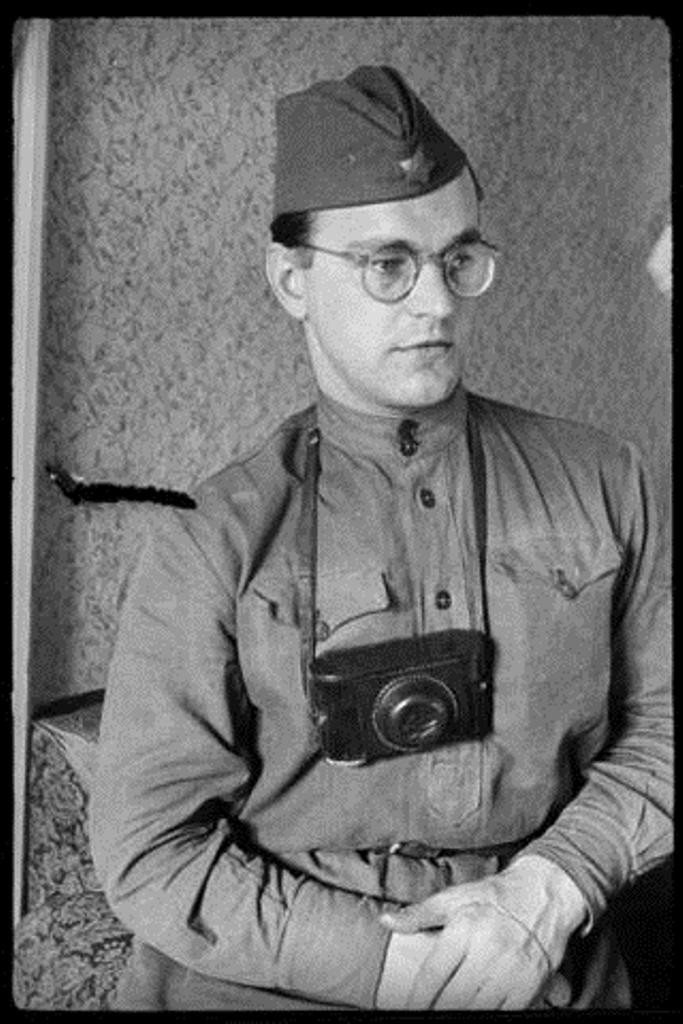Valery Faminsky was born on 15 May 1914 in Moscow. Before the war, he worked in an aviation chemistry factory, first as an assistant and later as a director of the photo lab. He also participated in some mountain expeditions in the Soviet Union and worked as a photo reporter for various Soviet institutions until the German invasion in summer 1941. Due to his bad eyesight, he was conscripted to the rear service of the NKVD troops in 1941. However, in 1943, Faminsky was able to demobilise himself and became a photo correspondent for the Military Medical Museum of the Red Army.
From 1943 to 1945, he accompanied the advancing Soviet troops at seven fronts and marched with the 1st Belorussian Front into Berlin in April 1945. Here, Faminsky took series of photos for the museum as well as his private collection. Contrary to official Soviet propaganda footage, his photos often showed wounded or even dead Soviet soldiers, everyday scenes of the Red Army and German civilians in Berlin and its suburbs. After collecting enough material from his photo sessions, Faminsky would return from the frontline to the nearest first aid station or hospital to develop his film rolls and send them to Moscow. In addition, he created 50 panoramas with war photos for the museum.
After the war, Faminsky worked in the Moscow branch of the art fund of the Russian Soviet Federative Socialist Republic as a photographer; his work was exhibited several times. He also worked as a retoucher. Valery Faminsky died in Moscow on 8 September 1993. His private photographical archive was discovered by the Russian photographer Arthur Bondar during a private auction in 2016. Bondar later revealed the archive on various platforms and media, including The New York Times. Subsequently, Faminsky’s photos became widespread and gained the same recognition as the photos of Yevgeny Khaldei and Robert Capa.
